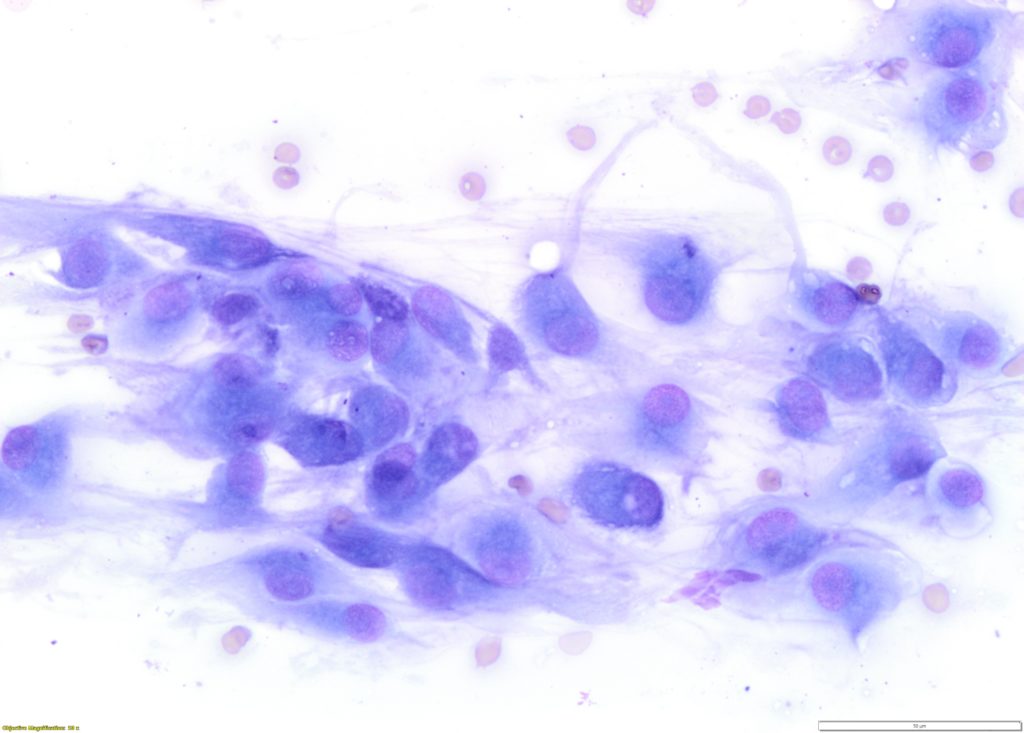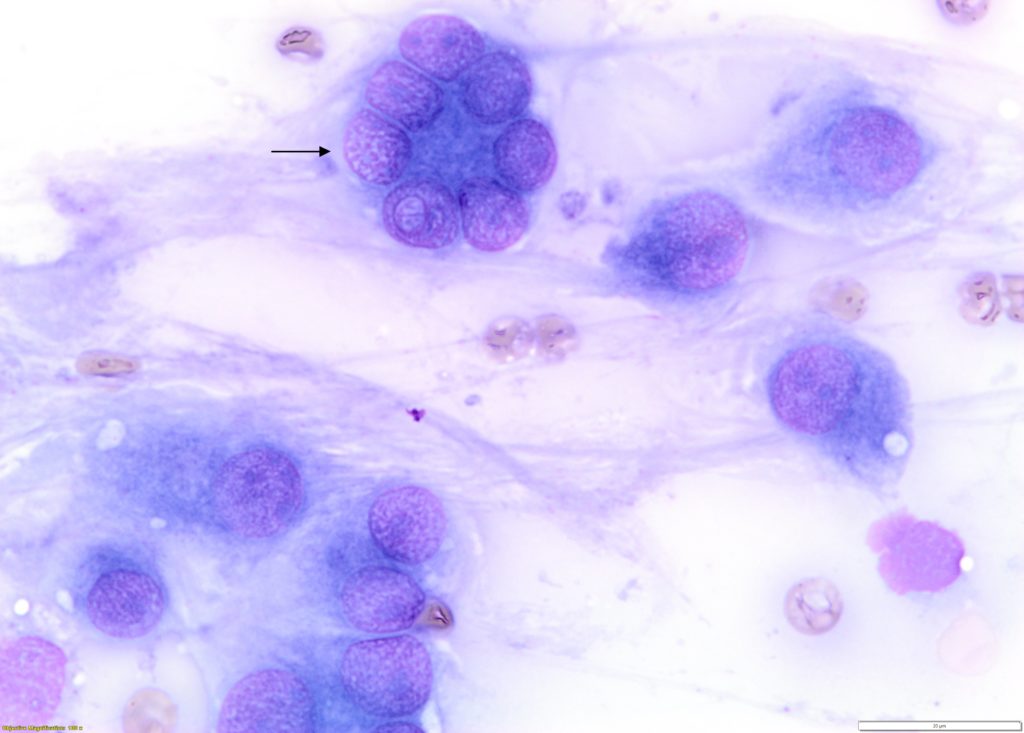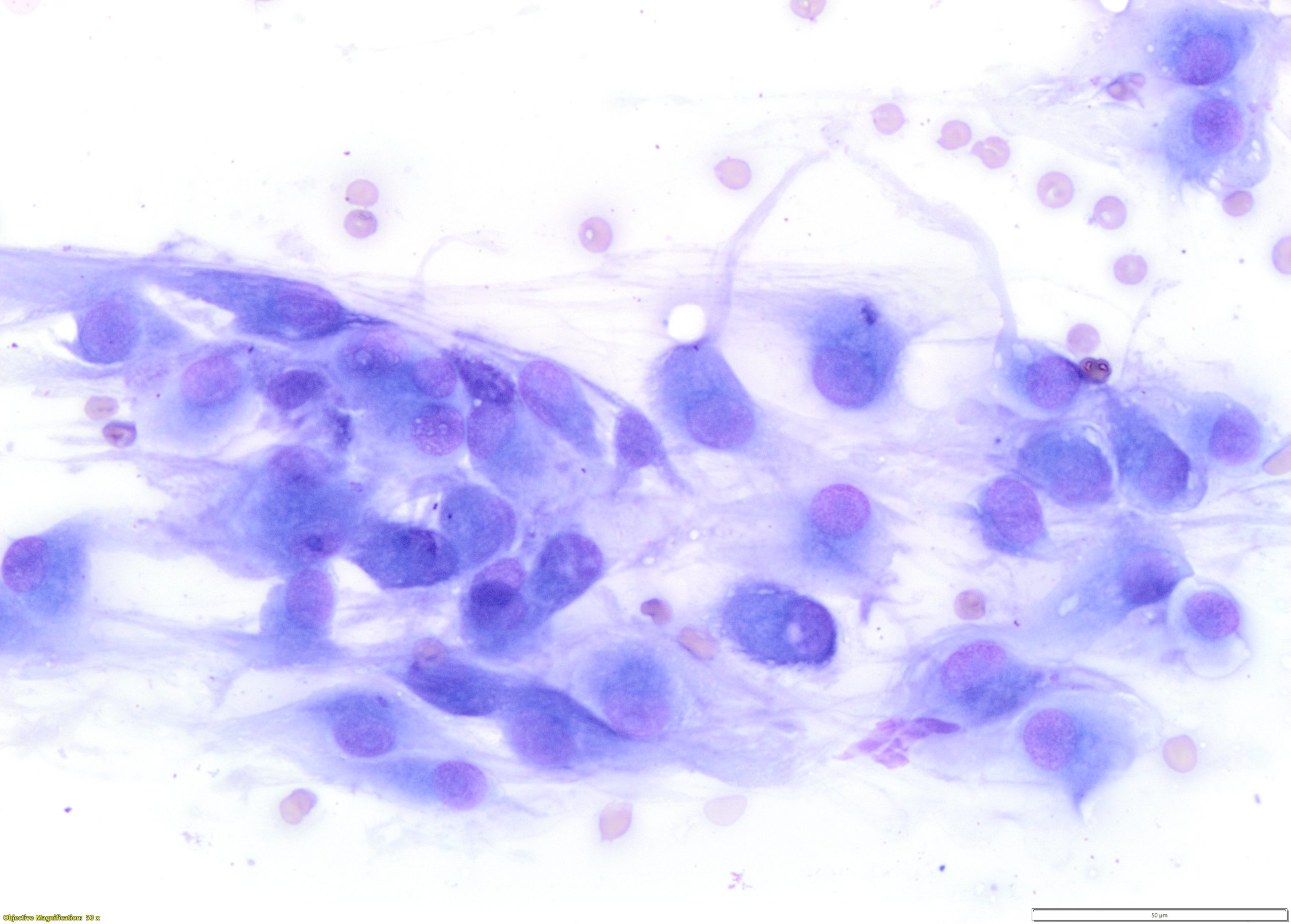REBECCA ALLAN
Clinical history
An 11-year-old, female spayed, Shih Tzu presented at the veterinarian for a regular check-up. The owner asked for a recently discovered mass to be checked out. Palpation revealed a 12 mm, firm, subcutaneous, non-painful mass located on the left thigh. Fine needle aspiration of the mass was performed, and smears were submitted for cytology.
Figures 1 & 2 are photomicrographs of representative cytology findings.


Questions to consider on examination of the smears
> How would you describe the population of cells present?
> What is the cell, indicated by the arrow in Figure 2, colloquially known as?
> What is the most likely diagnosis?
> What next steps would you take?
Description of the cell population
The cellular population is mesenchymal, consisting of plump oval to spindle shaped cells in loosely arranged aggregates, with round to oval nuclei, small nucleoli, and moderate amounts of wispy tapering cytoplasm, that have indistinct cell borders and minimal to mild variation in cell and nuclear size. Also present are multinucleated cells with peripherally located nuclei.
What is the cell in figure 2 colloquially known as?
This multinucleated cell with nuclei located at the periphery, is known as a crown cell.
What is the most likely diagnosis?
Findings are consistent with a soft tissue sarcoma, an umbrella diagnosis that encompasses tumours of connective tissue, nerve sheath and perivascular origin. Morphology of cells, including presence of crown cells, is suggestive of a perivascular wall tumour, however confirmation of diagnosis would require histopathology.
What next steps should be taken?
The next step would be excisional biopsy and submission for histopathology, to further classify type of tumour and to assess completeness of removal. These tumours tend to have low metastatic potential and with clean margins, local recurrence is less likely.
Acknowledgements to Nick Deane from Paws Vets, Woodend for the case submission and supplementary information.

